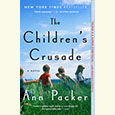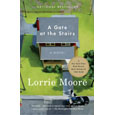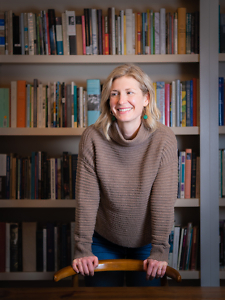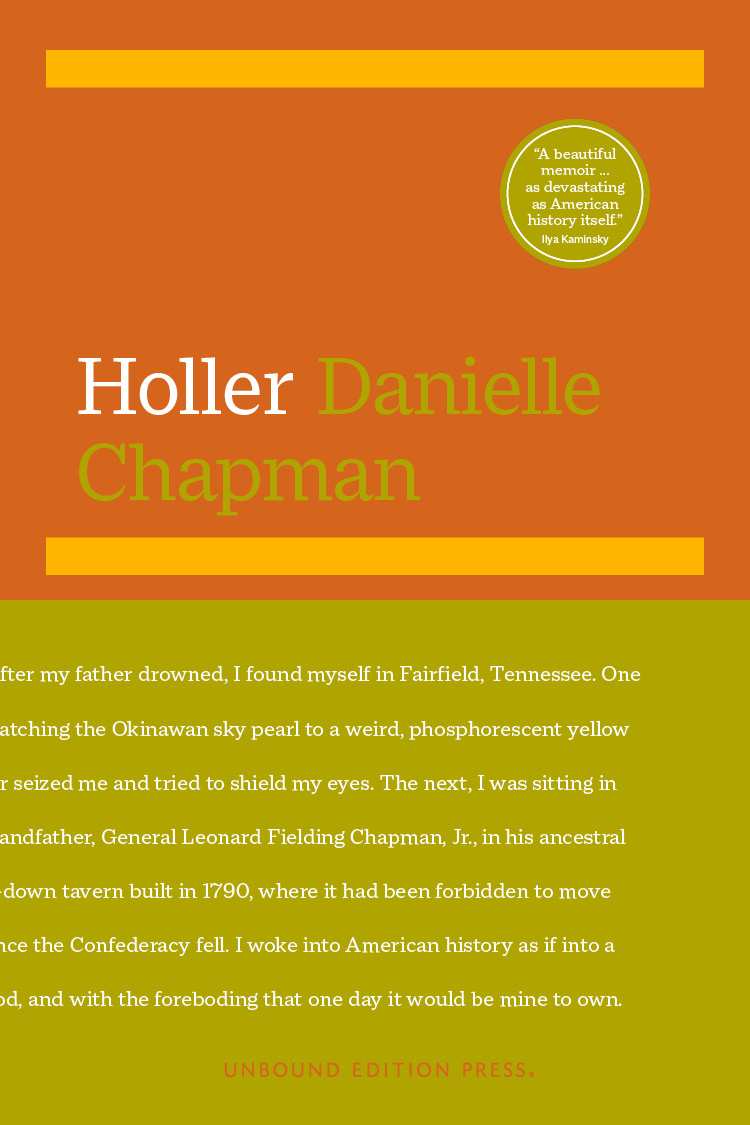Ties That Bind
Author-physician Abraham Verghese talks with Chapter 16 about his dual career and his latest novel, Cutting For Stone
Now an accomplished surgeon and teacher, Abraham Verghese was born and educated in Ethiopia but served his medical residency in Johnson City, Tennessee, from 1980 to 1983. After a fellowship at Boston University, Verghese returned to Johnson City to care for AIDS patients—an experience he later wrote about in his first book, My Own Country. Determined to develop as a writer as well as a doctor, Verghese put his medical life on hold to attend the celebrated Iowa Writers Workshop. Since earning a Master of Fine Arts degree in 1991, he’s balanced his day job with a writing career, publishing a second book of nonfiction, and contributing to magazines like Esquire and The Atlantic.
In his first novel, Cutting For Stone, Verghese tells the story of Marion Stone, an orphaned twin conceived of an illicit affair between an Indian nun and a dashing but volatile British surgeon. Raised in an Ethiopian mission hospital, Marion and his brother Shiva develop a love for medicine—and a love for the same woman. Fleeing romantic and political strife, Marion, a freshly minted intern, assigns himself to an overcrowded, underfunded New York City hospital. While he finds his legs as a physician, forces conspire to reunite Marion with his brother and the father who long ago abandoned them. Verghese injects Cutting For Stone with an intimate knowledge of the healing arts and its mysteries. With wise and compelling prose, the epic tale weaves its themes of love, betrayal, forgiveness, and self-sacrifice together with the destinies of a country and a proud yet fractured family.
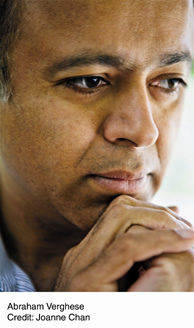 Chapter 16: Cutting For Stone is rich with charming asides—Matron Hirst’s warning, for instance, that the soil around Missing Hospital was so fertile that stepping in it barefoot might cause one to “sprout new toes.” You grew up in Ethiopia, where much of your story is set. Do such images come from your own early life?
Chapter 16: Cutting For Stone is rich with charming asides—Matron Hirst’s warning, for instance, that the soil around Missing Hospital was so fertile that stepping in it barefoot might cause one to “sprout new toes.” You grew up in Ethiopia, where much of your story is set. Do such images come from your own early life?
Verghese: I think such images come from both early life and from long hours sitting in the chair worrying over a manuscript, trying to find images and metaphors to ground the reader. The early section of the book is one I revised untold times, and so that image of the sprouting toes probably came from all that reworking of the opening.
Chapter 16: What came first for you, an interest in creative writing or an interest in medicine?
Verghese: At the time I grew up in Ethiopia, the very idea of a career related to writing was nonexistent. I went into medicine out of love for that field. I had always written and from a young age had kept a diary and made observations. But when I was an intern and resident, I began writing largely for my own pleasure. Later, when I was working as an internist and infectious diseases specialist, particularly when I was in Johnson City, Tennessee, in the mid and late eighties, I wrote short stories and essays as a way of keeping sane during those intense days during the early AIDS epidemic. I finally felt I was burning out from the intensity of the AIDS experience, and so after five years I took a break and attended the Iowa Writers Workshop. Going there involved a big sacrifice for my family—I had cashed in my tenured position and cashed in my 401(k) plan. It forced me to take myself very seriously as a writer.
Chapter 16: You’re a teaching physician, and one of your particular areas of interest is the doctor-patient relationship—you’ve referred disparagingly to technologically obsessed doctors who treat their clients like “iPatients.” One of the main characters in Cutting for Stone, Dr. Thomas Stone, is a skilled surgeon who’s passionate about healing but is hardly Marcus Welby in the bedside manner department. Is Dr. Stone a stand-in for modern physicians who may have exceptional tools but lack the ability to demonstrate compassion?
Verghese: I don’t think there are necessarily “technologically obsessed doctors.” What does happen is that technology gradually invades and supersedes common sense. It is easier to order a CAT scan than to actually go see the patient, and as long as American medicine operates as a ‘menu without prices,’ to quote my colleague Alan Garber, then it is just the easy way but not the best way. Thomas Stone, I would argue, cares deeply but is also deeply scarred, and therefore has the illusion that by focusing all his technical skills on the patient he is spared from self-analysis or deep insight or commitment to friendships. This is a common seduction in medicine: the “best” intern in my days was the one who never seemed to go home. We admired such a person, and we did not worry too much about what this meant to his or her personal life.
Chapter 16: Your 1994 book, My Own Country, documents your experience battling the AIDS epidemic in remote Johnson City. Cutting For Stone‘s narrator, Dr. Marion Stone, Thomas Stone’s son, is a physician who struggles against overwhelming odds in neglected facilities. To what extent is Marion Stone an autobiographical character?
Verghese: Obviously, the story is reflective of my own life to some degree—I was born in Ethiopia of Indian parents, raised in that country and began my medical training there, leaving during the civil unrest when Emperor Haile Selassie was deposed. But I was not a twin and did not grow up in a mission hospital. In short, the geography and the politics are real; all the rest is made up.
Chapter 16: Marion Stone says, “I chose the specialty of surgery because of Matron, that steady presence during my boyhood and adolescence. ‘What is the hardest thing you can possibly do?’ she said.” Do you, too, recommend the path of most resistance?
Verghese: I used Matron’s character as one might use a teacher or another guide in one’s life to make the point that achieving to the best ability you have is something very worthwhile to strive for. It seemed to ring true to me that a figure as towering and consistent as Matron might represent such an influence in a young boy’s life. Also it seemed to work with what would have been the ideal of a Christian mission—development and stewardship of the talents you are given—and also to make the point that while medicine can be a calling to serve others, it is often a difficult and exhausting path to choose. And yes, I recommend challenging oneself. The most interesting and charismatic people one meets are rarely people who have taken the easy and expedient path.
Chapter 16: One theme of Cutting For Stone is healing—physical, emotional, spiritual, and relational. “We are all fixing what is broken. It is the task of a lifetime. We’ll leave much unfinished for the next generation,” says Marion Stone. For you, does literature also offer a form of healing?
Verghese: Yes, I think writing is how we make sense of the world; how we explain ourselves to ourselves. Stories are justice-dealing machines, a way to take the world in for repairs.
Chapter 16: You’re one of those people who remind a lot of people of how little they accomplish. Between teaching medicine at Stanford and the University of Texas, writing for the likes of The New Yorker and Esquire, and composing rich, historic novels such as Cutting With Stone, you must be very busy. What’s your secret to time management?
Verghese: I regard myself as a poor time manager, really. I have a busy and fulfilling job as a physician and teaching medical students, so I write when I have time rather than, as many writers do, writing for a set amount of time every day. At Stanford, I actually have two offices, which is more than a blessing as it takes me out of the hubbub of activity several times a week. If I manage to control my schedule properly, this gives me undisturbed writing time during the day—a real luxury. Of course, I still do a lot of writing at home at nights. The key is doing a little bit of something each day, and it is amazing how soon it adds up.
(This interview originally appeared on February 24, 2010.)

